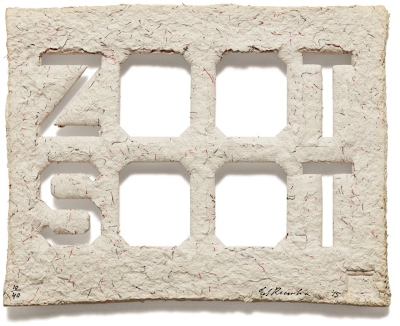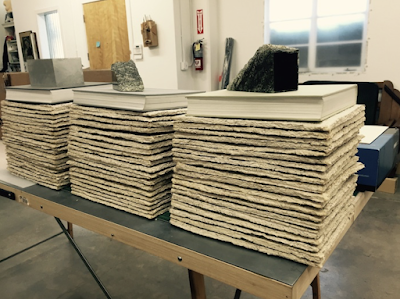Mariken Wessels
Taking Off. Henry My Neighbor
Ghent, Belgium: Art Paper Editions, 2015
320 pp., 24 x 33 cm., paperback
Edition of 2000
"Of the three-hundred-plus pages, edited and arranged by Wessels from Henry’s archive, over a hundred pages show repetitive grids of middle-aged Martha posing in quasi-erotic positions, in states of undress at their home in New Jersey, from 1981 to 1983. She stiffly offers herself to her husband’s camera, exhibiting more of a clinical awareness of her body than any real pleasure in it. Her gaze never meets the lens, but seems to follow directions to look stage right or stage left. There is nothing extraordinary about these pictures, aside from their immense number. Anyone with an iPhone might have many similar images. By 1984 Martha had left Henry, maybe tired of the constant attention of his mammogram-like camera, or maybe simply tired of Henry. A photograph shows her now-familiar arms, stretching out from an upstairs window and throwing streams of photographs down to the street below. We see the objects of Henry’s fantasy unhinged from the person of Martha, literally blowing away.
What happened after Martha left marked Henry as an artist. He recycled his archive of photographs and collaged together fantastic mutations, recombining body parts into sprawling new forms. These images enact Martha’s symbolic death, engendering a battalion of phantasmagoric monsters in her place. She becomes a mostly headless totem of bulbous flesh, an orgy of breasts, a psychosexual grotesquerie. Henry then used these composites as studies for clay figures, which are also documented here. These sculptures complete the process of abstraction. Martha remains only as a disembodied breast-phallus with a striking resemblance to modernist sculpture.
What is clear is this: Henry’s long obsessive relationship with his wife allowed him to develop a voice that gave rise to a powerful and complex body of work. It is less clear what Wessels’s relationship with Henry yielded. We are told only that Henry left his work in his house under a neighbor’s care, and the neighbor later gave the work to Wessels. Henry is not given a last name, and the neighbor remains anonymous. How did Henry, an artist from New Jersey, end up having his life’s work published by a Dutch artist? What distinguishes her work from that of an editor or curator?
After Henry abandoned his work he built a cabin in the woods to live out his last days. This follows a fantasy dear to my heart, one of isolation and self-reliance—a trope as familiar for visionaries and outsiders as the proverbial ride into the sunset is for cowboys. The final sequence in the book, presumably made after Henry had retreated to his cabin, shows traps laid in the forest and the animals caught in them. These pictures can be read as a final objectification of Martha, or as a reflection of Henry’s own emotional state. In either case he seemed to repudiate carnal pleasure, finally reducing the body to the raw condition of meat."
- Justine Kurland, Aperture






















































